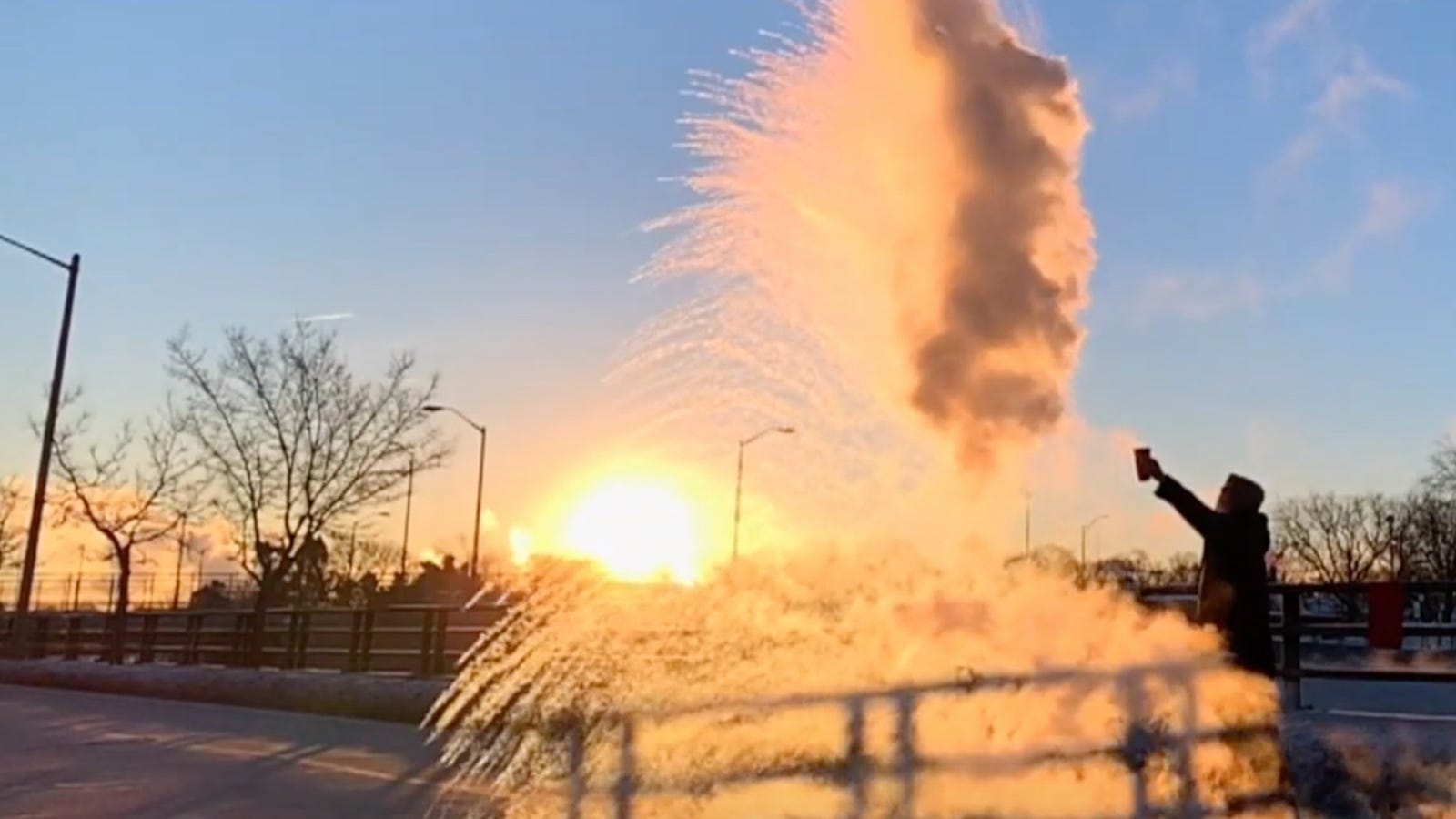
It’s that time of year again when it’s time to talk about the dangers of boiling water.
At least eight people were treated at Chicago’s Loyola University Medical Center last week for second- and third-degree burns attributed to failed attempts at the so-called “boiling water challenge” during the polar vortex. Arthur Sanford, trauma and burn surgeon at Loyola, told WLS-TV it isn’t even just the people who are trying the stunt either; a 3-year-old bystander was among those he said were injured. According to Sanford, seven of these cases may require “an operation because the burns are so deep.”
It’s for this exact reason people should not be trying to pull this off for the likes—it’s not even new! Hell, we asked that you please not try this in 2017. But every year, videos of people participating in the stunt inevitably crop up on YouTube and social media. When temperatures drop, people boil a pot of water, hoof it outdoors, and record themselves tossing the water into the air to watch it turn into “snow.”
What you see in these viral videos has everything to do with the evaporation and subsequent freezing of droplets when the boiling water hits the exceptionally cold air. As Mark Seeley, a climatologist and a former professor at the University of Minnesota, told Live Science back in 2011:
“[C]old air is very dense, and this makes its capacity to hold water vapor molecules very low. There’s just fundamentally less space for the vapor molecules,” Seeley explains. “So when you throw the boiling water up, suddenly the minus 22 air has more water vapor than it has room for. So the vapor precipitates out by clinging to microscopic particles in the air, such as sodium or calcium, and forming crystals. This is just what goes into the formation of snowflakes.”
Seeley told Live Science that “a huge temperature gradient” is necessary to pull it off, adding that in “in Minnesota, we don’t try this experiment until it’s minus 30.” Also, the potential for someone to seriously hurt themselves—or someone else!—trying this in less conducive conditions is evidently high. And as we’ve said before and as I’ll point out again here, there is plenty of other great stuff to do in the snow other than attempting a potentially dangerous stunt that can cause bodily harm.
Be safe out there, folks.
[WLS-TV]
Be the first to comment